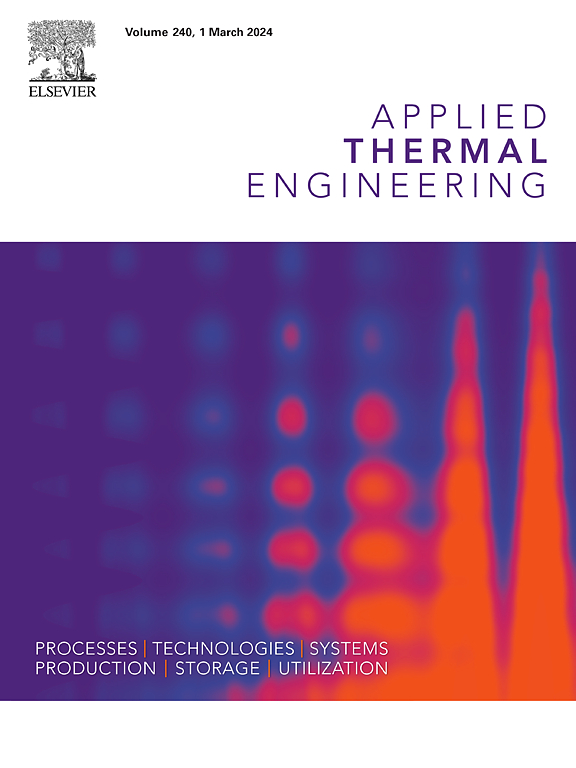Numerical modelling and simulation of heat transfer for micro-sized spherical Al-4.5 wt% Cu alloy particles
IF 6.1
2区 工程技术
Q2 ENERGY & FUELS
引用次数: 0
Abstract
Pulsated Orifice Ejection Method (POEM) is a typical containerless heat transfer and solidification process for the preparation of micron-sized spherical particles. The heat transfer mechanism dominated by convection and radiation plays crucial roles. In the context of the preparation process, heat transfer, and solidification characteristics of micrometer-sized spherical metal particles using the POEM , this paper established a numerical calculation model for particle heat transfer and solidification in a three-dimensional polar coordinate system. The model is used to simulate the temperature variations and distribution characteristics at different stages of the solidification process of Al-4.5 wt% Cu alloy particles. The temperature gradient, cooling rate, advancement of the liquid–solid interface, and solidification rate during the particle solidification process were investigated. Additionally, the dominant mechanism of heat transfer in the particle solidification process was discussed, subsequently allowing for the calculation and analysis of the convective and radiative heat transfer characteristics as well as their respective contributions. On this basis, the influence of two different cooling gases on the particle solidification process was explored. The results of this paper demonstrated that convective heat transfer is the main mechanism of heat transfer during particle solidification. Besides, He gas has a stronger effect on the heat transfer of particles than Ar gas. It will benefit the optimization of the preparation process and the regulation of the solidification process for micrometer-sized spherical particles using the POEM.
微尺寸球形 Al-4.5 wt% 铜合金颗粒传热的数值建模与模拟
脉动孔喷射法(POEM)是制备微米级球形颗粒的一种典型的无容器传热和凝固工艺。以对流和辐射为主的传热机制起着至关重要的作用。本文针对使用 POEM 法制备微米级球形金属颗粒的制备过程、传热和凝固特性,建立了三维极坐标系下颗粒传热和凝固的数值计算模型。该模型用于模拟 Al-4.5 wt% 铜合金颗粒凝固过程中不同阶段的温度变化和分布特征。研究了颗粒凝固过程中的温度梯度、冷却速率、液固界面的推进以及凝固速率。此外,还讨论了颗粒凝固过程中热量传递的主要机制,从而可以计算和分析对流和辐射热量传递特征及其各自的贡献。在此基础上,探讨了两种不同冷却气体对颗粒凝固过程的影响。结果表明,对流传热是颗粒凝固过程中的主要传热机制。此外,He 气体比 Ar 气体对颗粒传热的影响更大。这将有利于利用 POEM 优化微米级球形粒子的制备过程和调节其凝固过程。
本文章由计算机程序翻译,如有差异,请以英文原文为准。
求助全文
约1分钟内获得全文
求助全文
来源期刊

Applied Thermal Engineering
工程技术-工程:机械
CiteScore
11.30
自引率
15.60%
发文量
1474
审稿时长
57 days
期刊介绍:
Applied Thermal Engineering disseminates novel research related to the design, development and demonstration of components, devices, equipment, technologies and systems involving thermal processes for the production, storage, utilization and conservation of energy, with a focus on engineering application.
The journal publishes high-quality and high-impact Original Research Articles, Review Articles, Short Communications and Letters to the Editor on cutting-edge innovations in research, and recent advances or issues of interest to the thermal engineering community.
 求助内容:
求助内容: 应助结果提醒方式:
应助结果提醒方式:


